Rocks and Weathering
1/66
There's no tags or description
Looks like no tags are added yet.
Name | Mastery | Learn | Test | Matching | Spaced |
|---|
No study sessions yet.
67 Terms
Constructive (divergent) plate boundary:
Plates that move away from each other.

Conservative plate boundary:
Where two tectonic plates slide past each other.
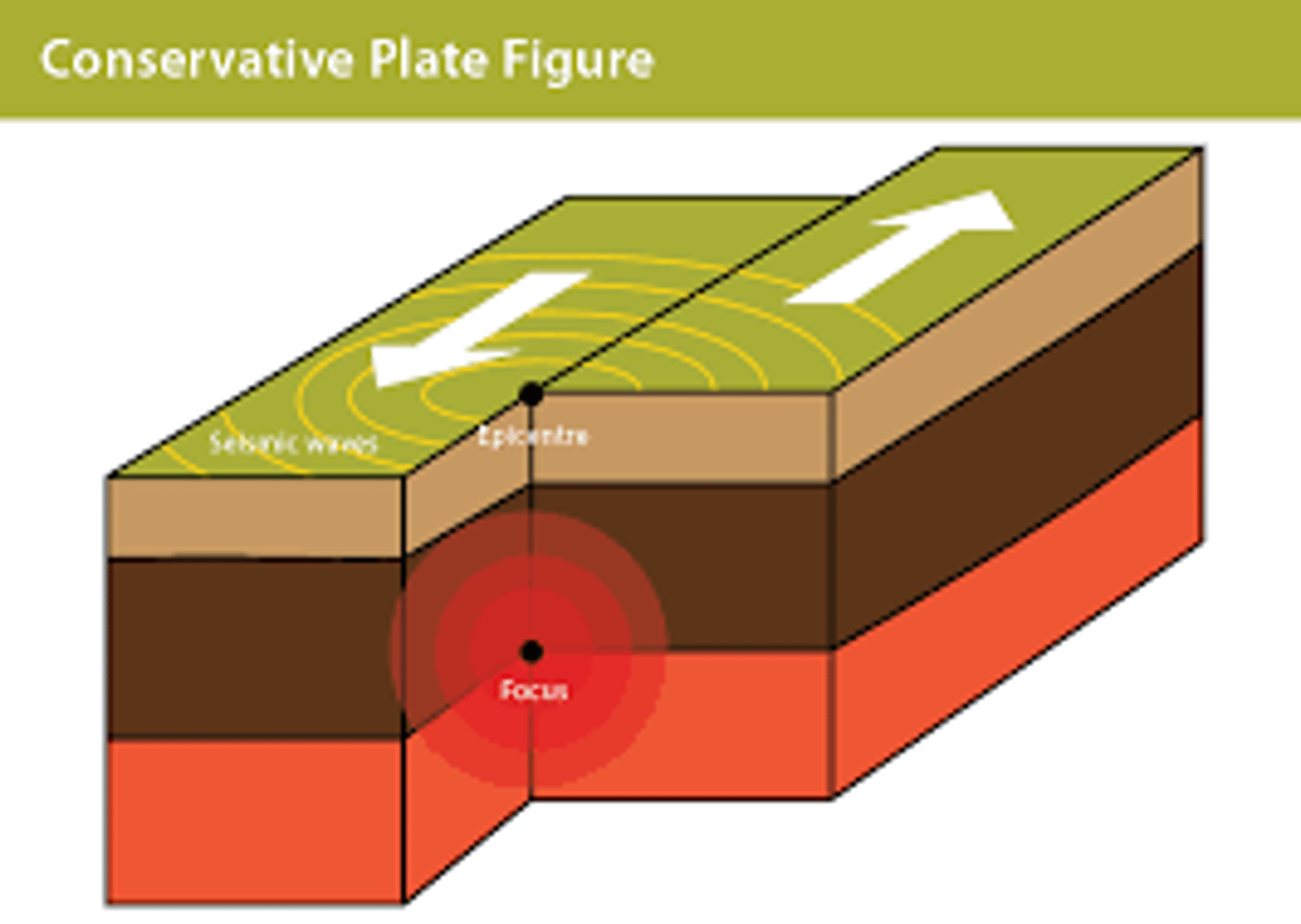
Convergent (destructive) boundary:
A plate boundary where two plates move toward each other.
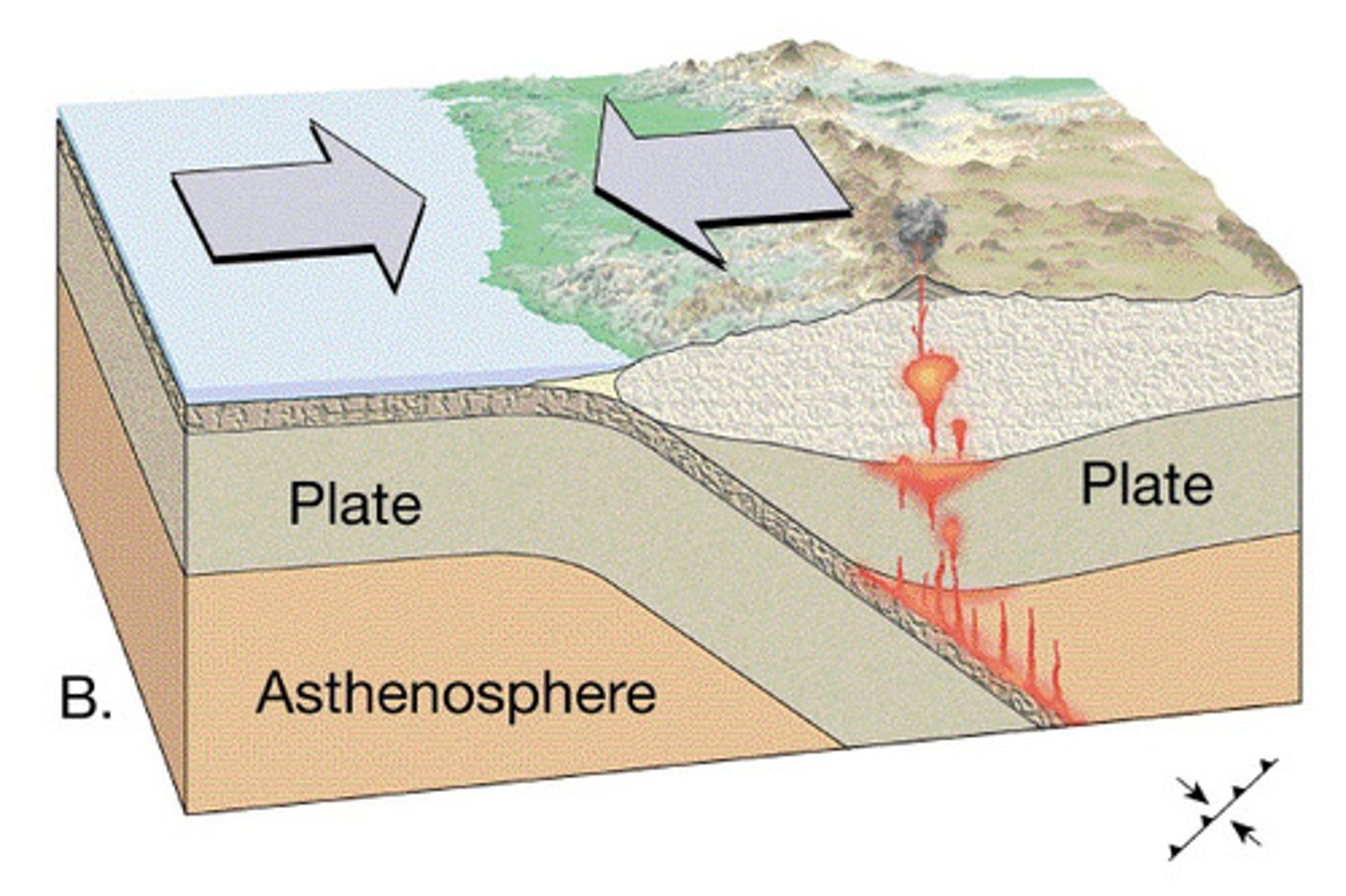
Sea-floor spreading (at divergent):
Result of mantle convection, where plates move apart and the density of crust decreases.
Less dense crust rises, forming mountain or elevated area.
Occurs at mid-ocean ridges e.g. Red Sea.

Subduction (at convergent):
The process by which oceanic crust sinks beneath a deep-ocean trench and back into the mantle, causing earthquakes or the formation of ocean trenches e.g. the Cascadia subduction zone 1000 km long.

Fold mountain building (at convergent):
Two plates coming together, forcing sedimentary rocks upwards, creating a constantly-growing fold mountain range e.g. Himalayas.
Ocean ridges (constructive):
Forms as a result of sea-floor spreading.
Plates full apart, magma rises filling gaps, forming basalt and magma-forming mountains e.g. Mid Atlantic Ridge spreading 1-2 inch a year.
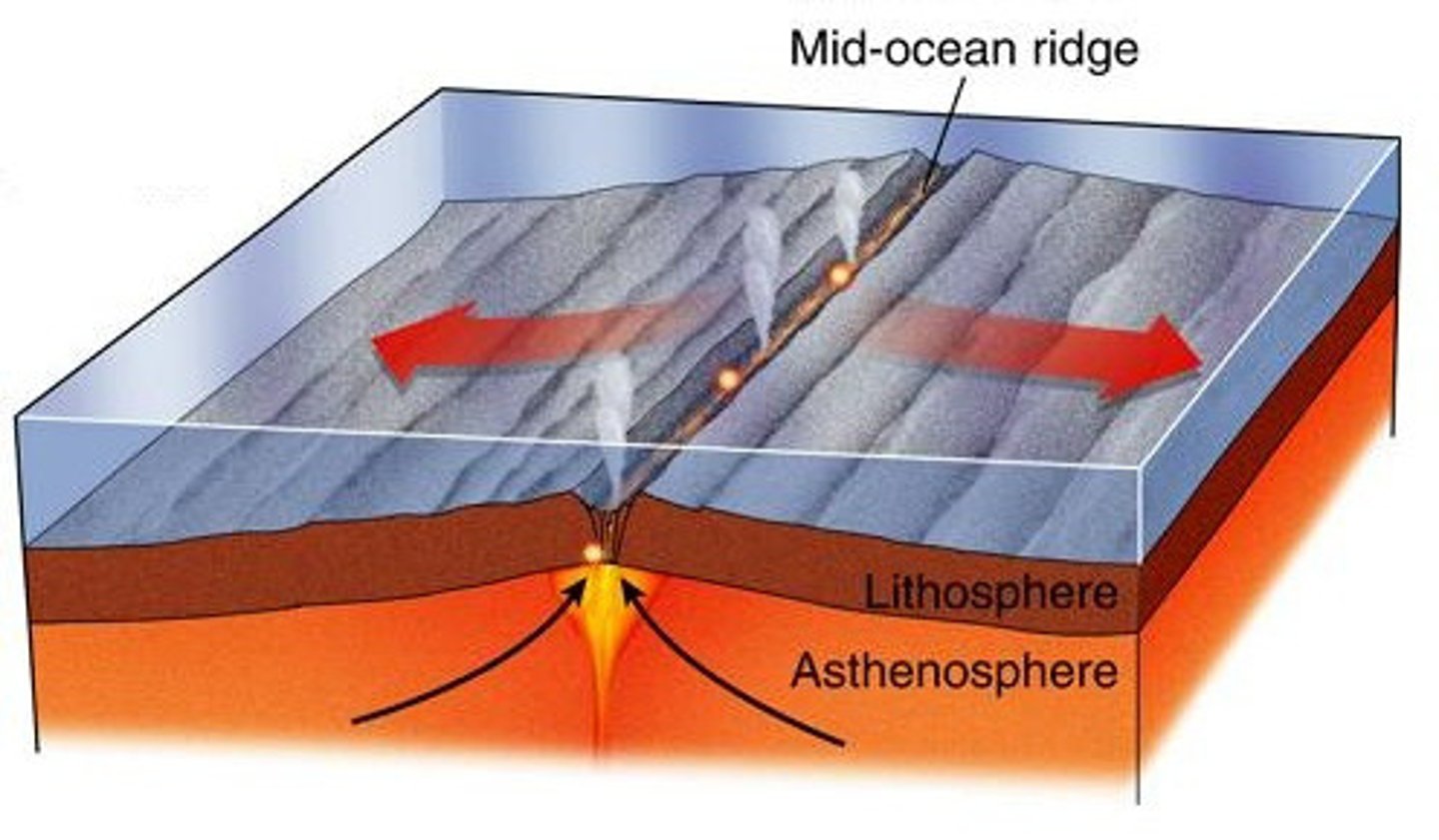
Ocean trenches (convergent)
They are large scale features that are long and relatively narrow depressions in the ocean floor (arc-shaped, 10 km deep and steep-sided) marking the point where oceanic crust has been pushed under the crust (aided by SP / RP / CC) and caused a downwarping of the non-subducted plate.
(deep-water areas which run along a coastline, created by subduction) e.g. Marina Trench in South Pacific.
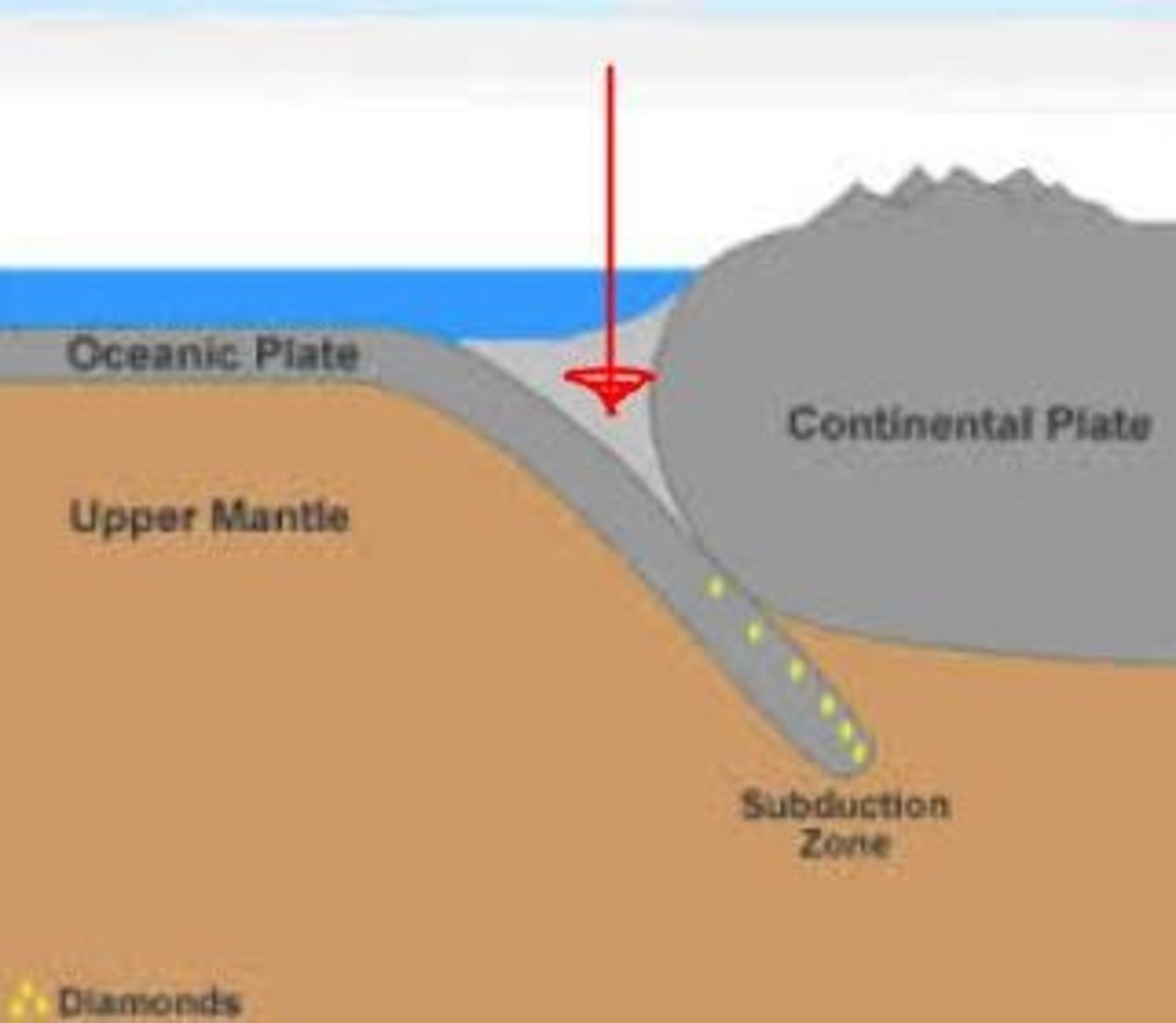
Volcanic island arc (at convergent):
A chain of volcanic islands generally located a few hundred kilometers from a trench where there is active subduction of one oceanic plate beneath another, formed as oceanic plate descends and melts, forcing magma to rise e.g. Ring of Fire.

Physical weathering:
The mechanical breakdown of rocks and minerals.

Types of Physical weathering:
- freeze thaw
- heating / cooling
- salt weathering
- pressure release (dilation)
- root action

Freeze-thaw weathering:
Water enters a crack in a rock, the water freezes and expands the crack and repetition the pressure releases and the rock cracks creating sharp jagged scree.

Salt weathering:
A weathering process where water seeps into cracks and evaporates, forming salt crystals that grow and expand in the cracks and holes of rock, creating pressure which eventually causes fragments of rock to break away
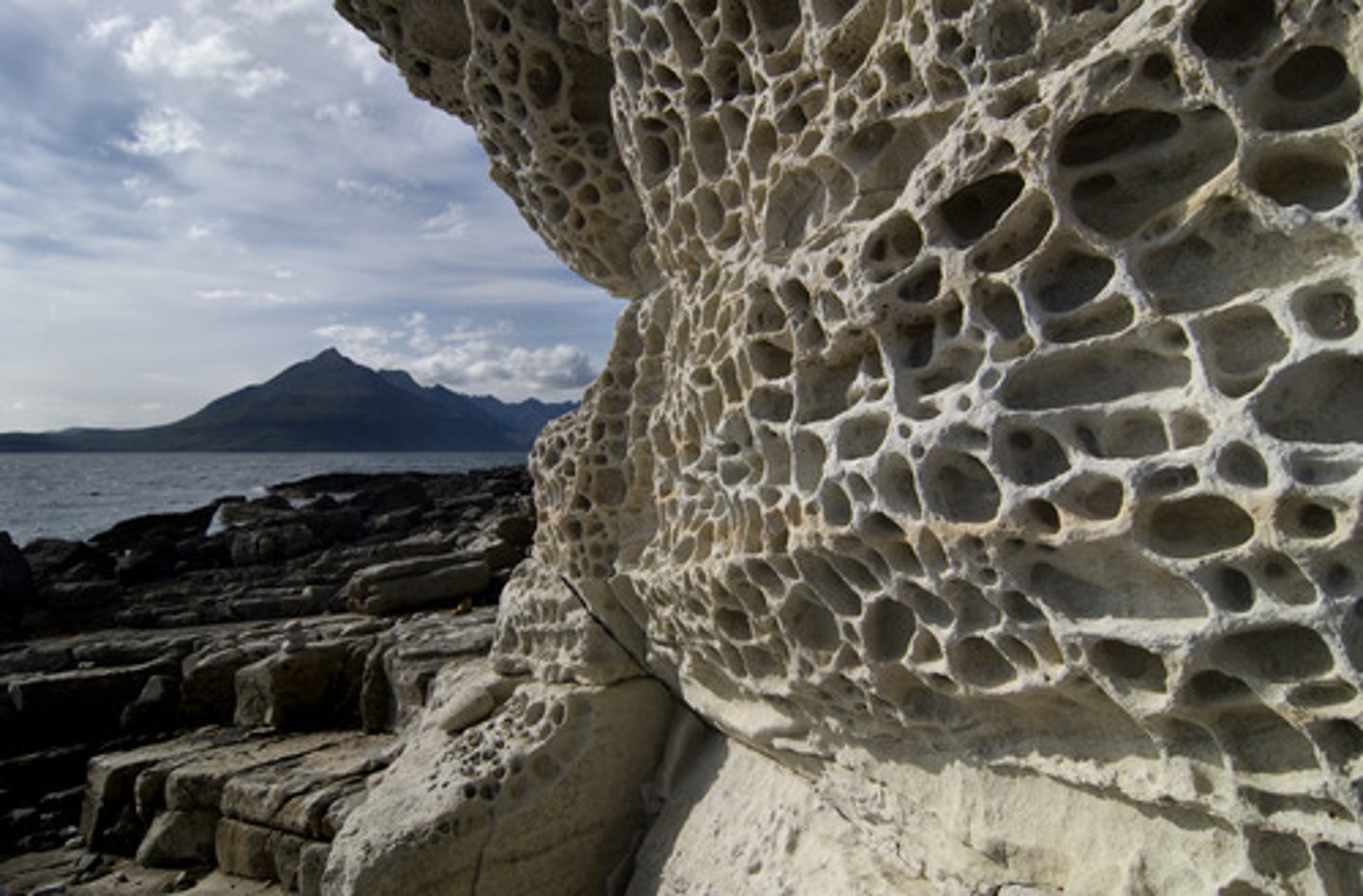
Pressure release:
Expansion and fracturing of rock due to removal of overlying rocks.

Root action:
Roots grow into and under rocks and pry them apart causing cracks to get bigger. Ex: cracks in the sidewalk.
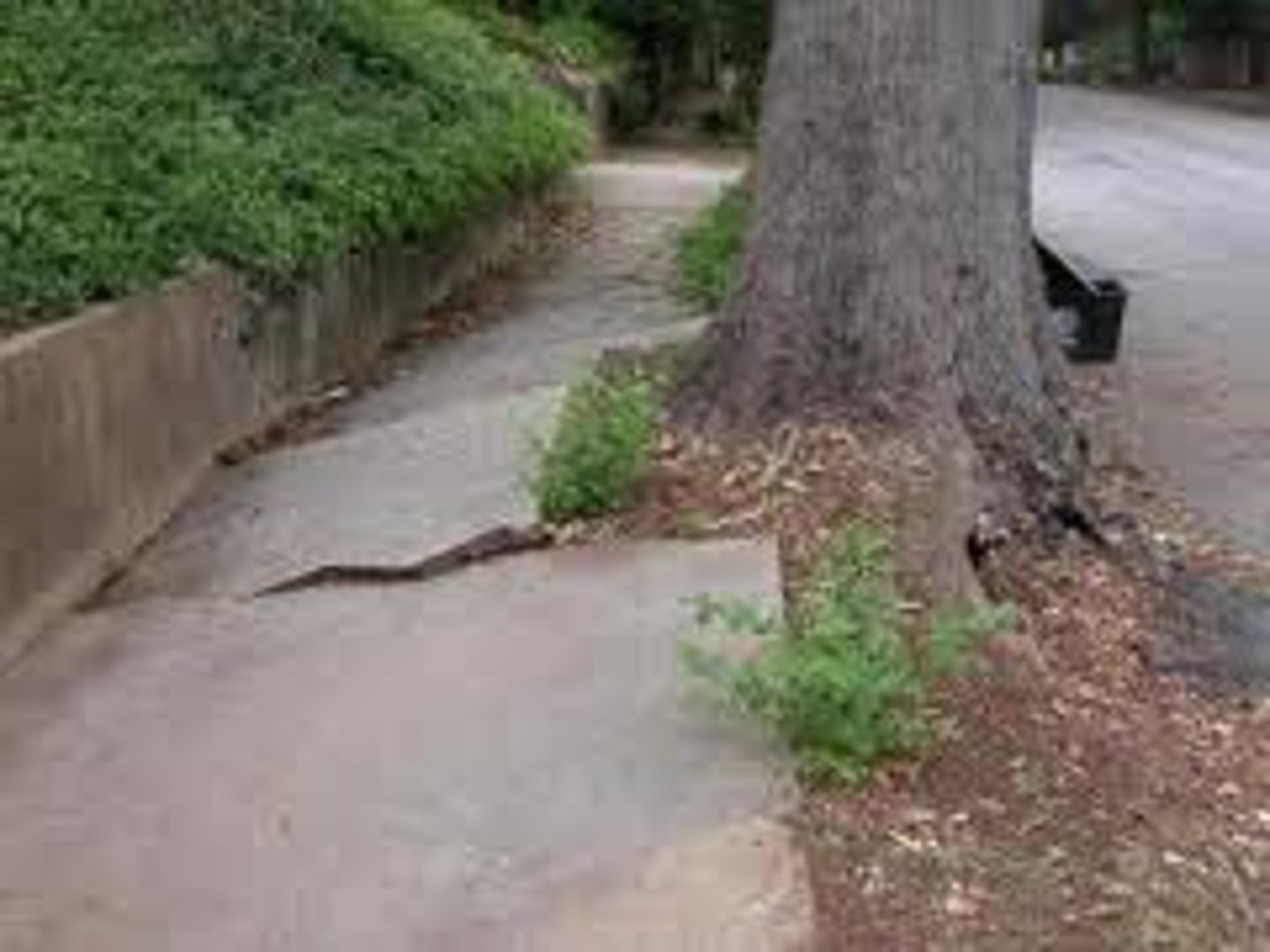
Chemical weathering:
The process that breaks down rock through chemical changes.

Hydrolysis:
Breaking down complex molecules by the chemical addition of water.
H20 -> <- H+ OH-
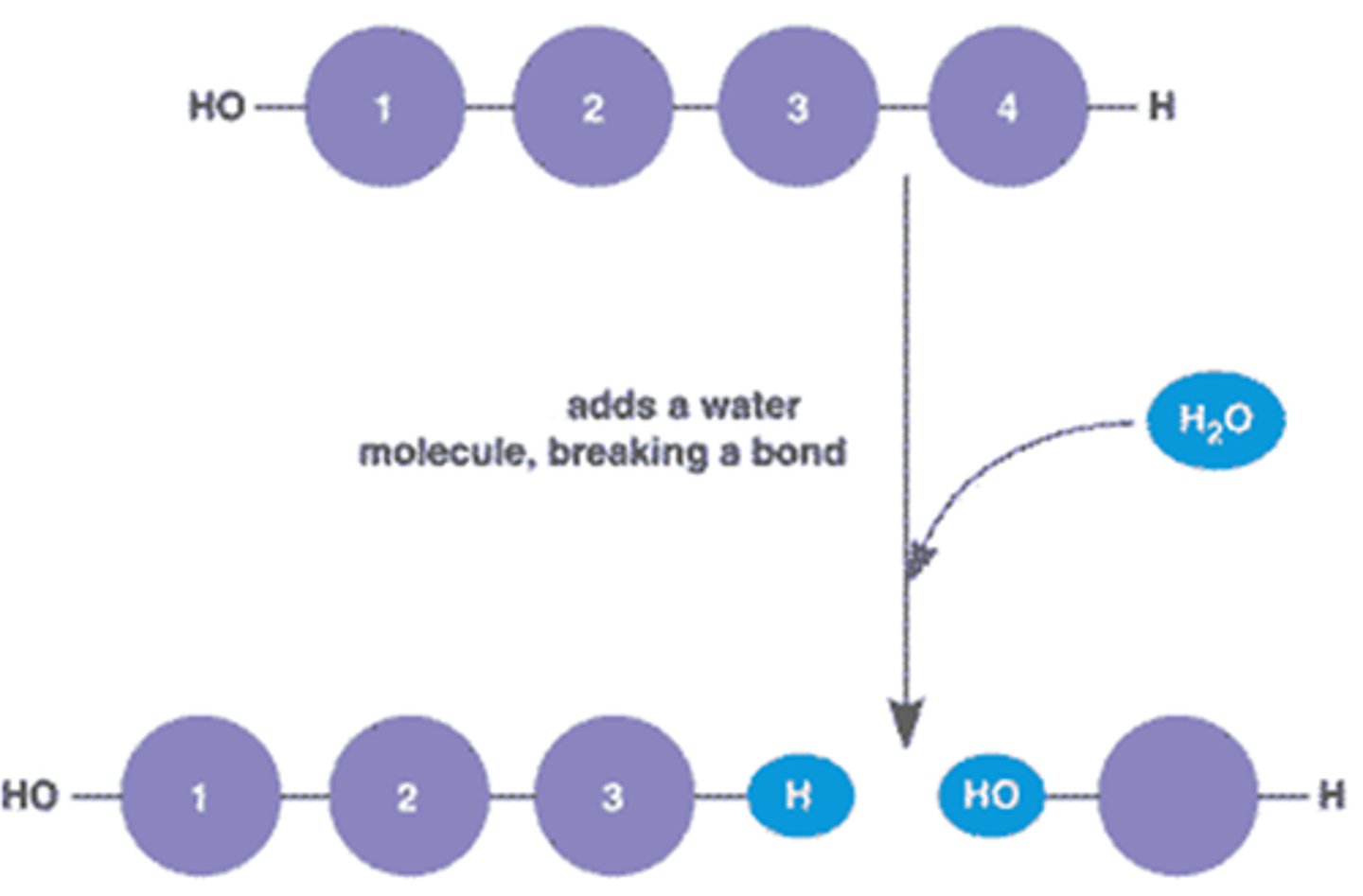
Hydration:
Hydration is a form of chemical weathering in which the addition of water to a rock which causes (expansion) the chemical decomposition. It then creates a new material or hydrate such as anhydrite or gypsum.

Carbonation:
Mixture of water with carbon dioxide forming carbonic acid, comes into contact with limestone rocks as soluble calcium bicarbonate is formed
- CACO3 + H2C03 --> Ca(HCO3)2
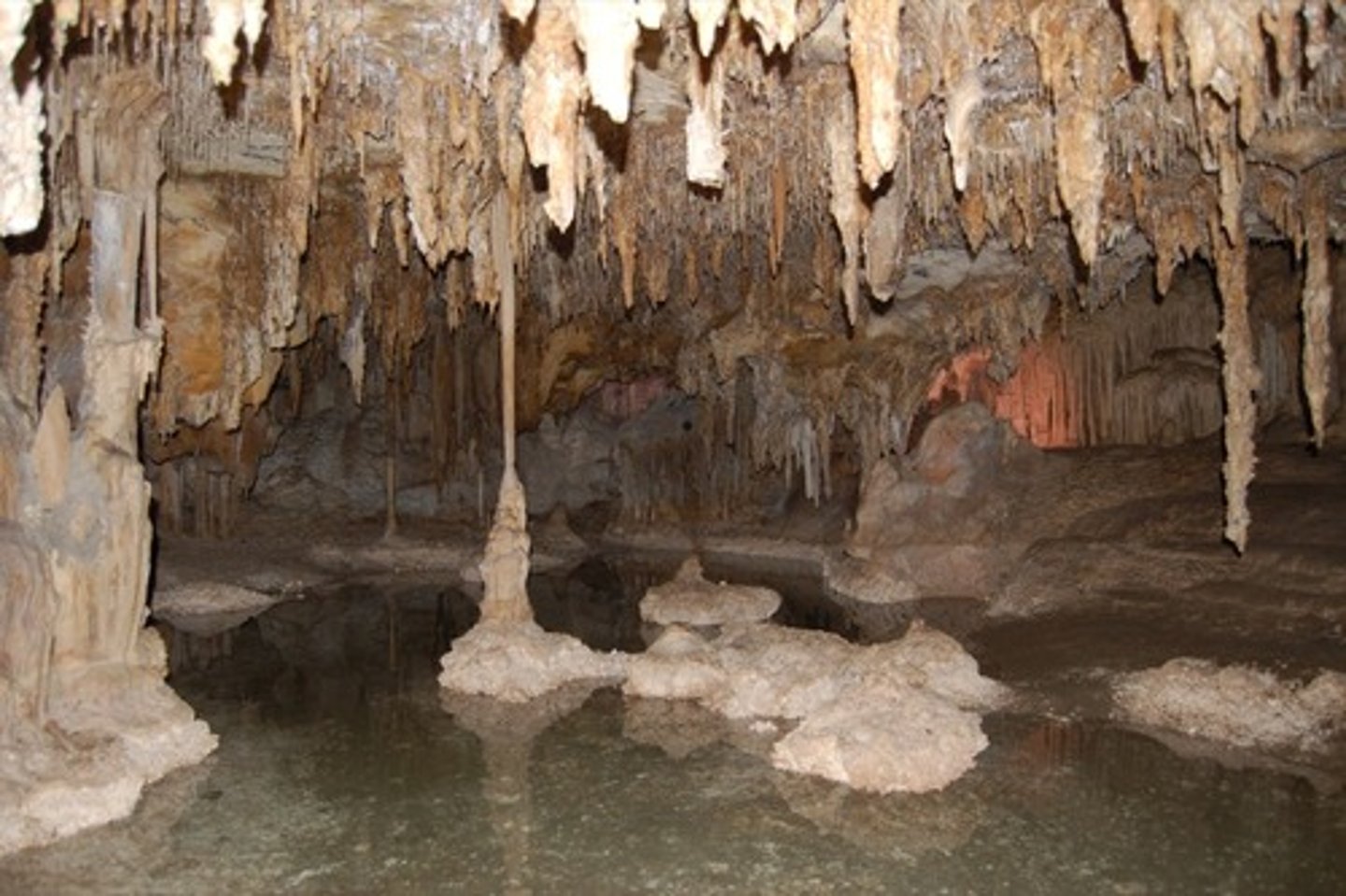
Oxidation:
When oxygen reacts with minerals such as calcium and magnesium to form iron oxide.
Fe + O2 --> Fe203
H20
As rocks oxidise, they become less resistant to weathering and weakening rocks, making them crumble.

Permeability:
Ability of rock or soil to allow water to flow through it.
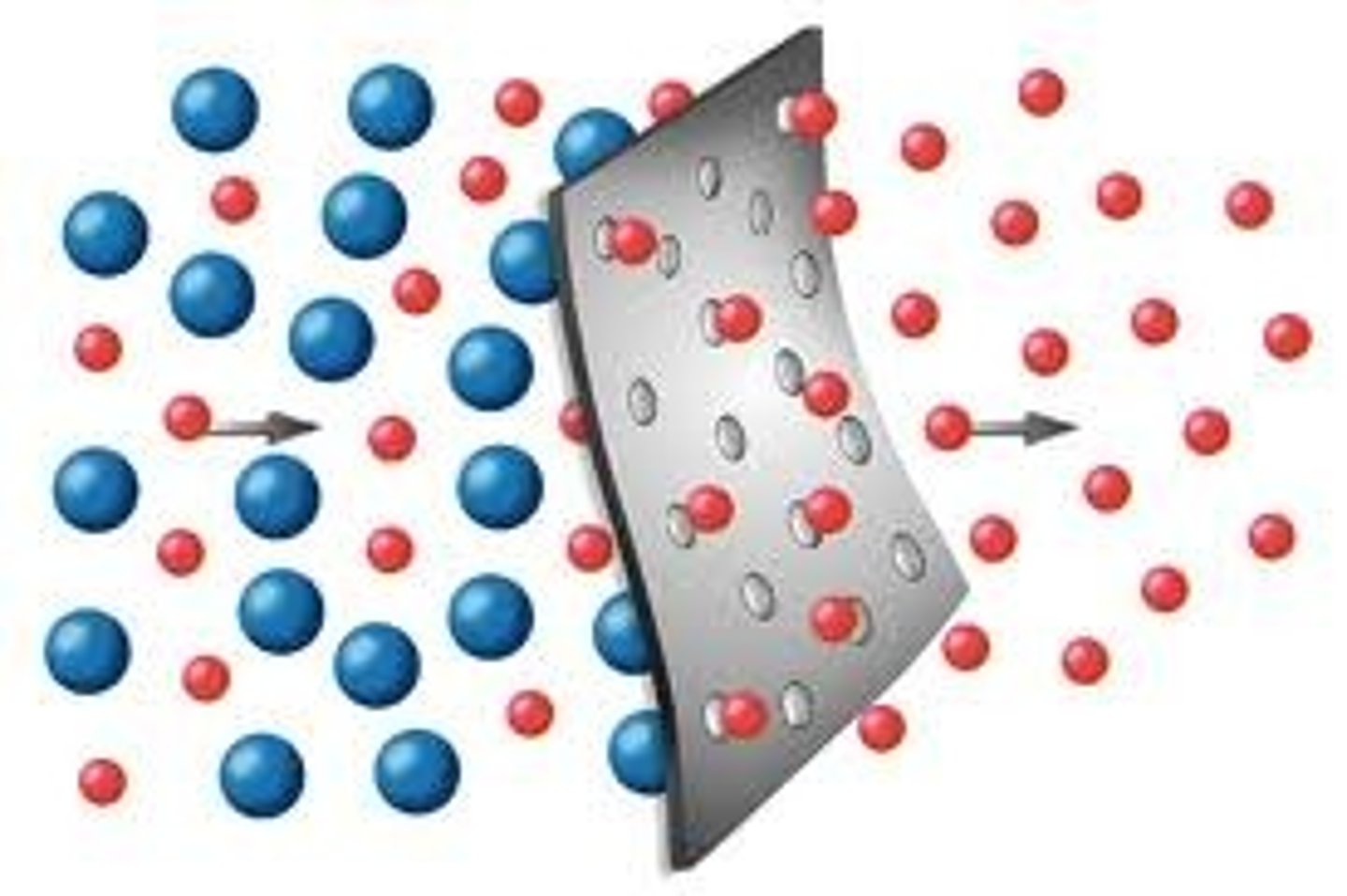
Porosity:
The percentage of the total volume of a rock or sediment that consists of open spaces. (ability to hold water)

Composition of rock:
What a rock is made of. One of 3 factors that determines how fast a rock will weather.
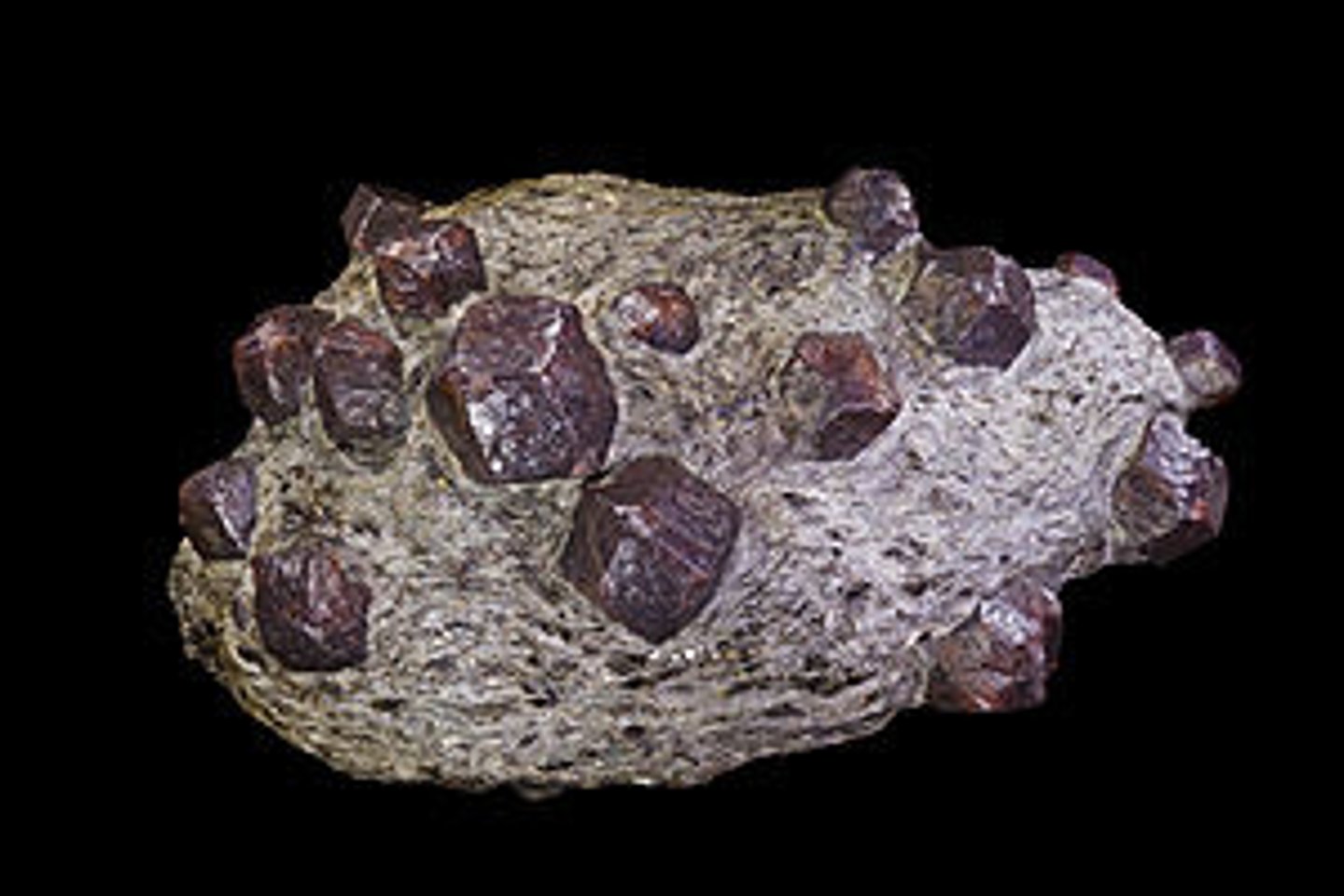
Factors affecting type and rate of weathering:
- climate
- rock type (ingeous = less permeble than sedimentary)
- rock structure
- vegetation
- relief
- precipitation
- temperature
Last two = more specific.
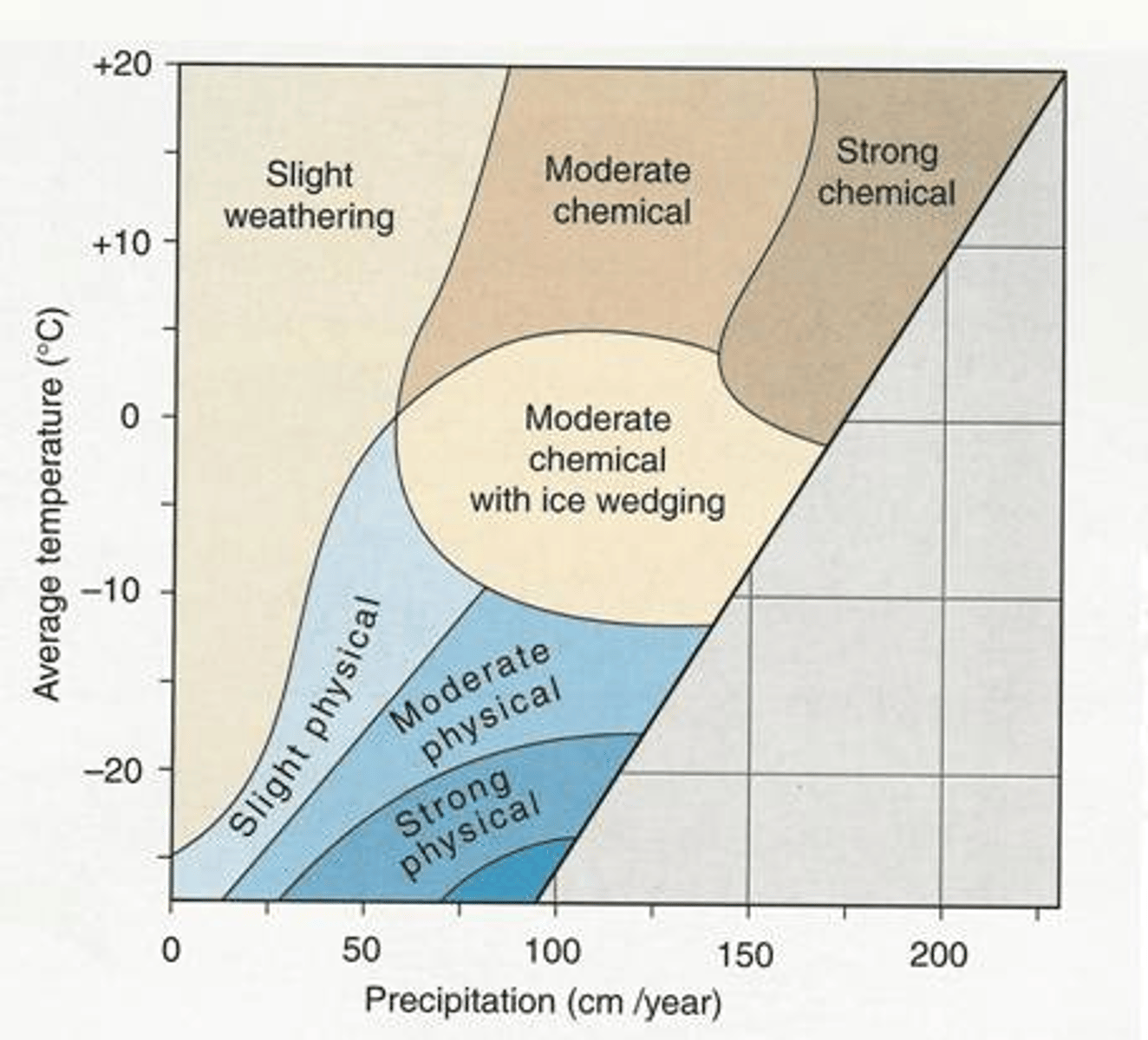
Exogenetic processes:
Processes operating at Earth's surface, involving weathering, mass movement, fluvial , aeolian (wind), glacial, periglacial (tundra) and coastal processes.
Mass movement:
Downslope movement of rock fragments and soil when gravitational influence exceeds force of resistance.

Slope:
Open system affected by biotic, climatic, gravitational, groundwater and tectonic inputs which vary in time and scale.
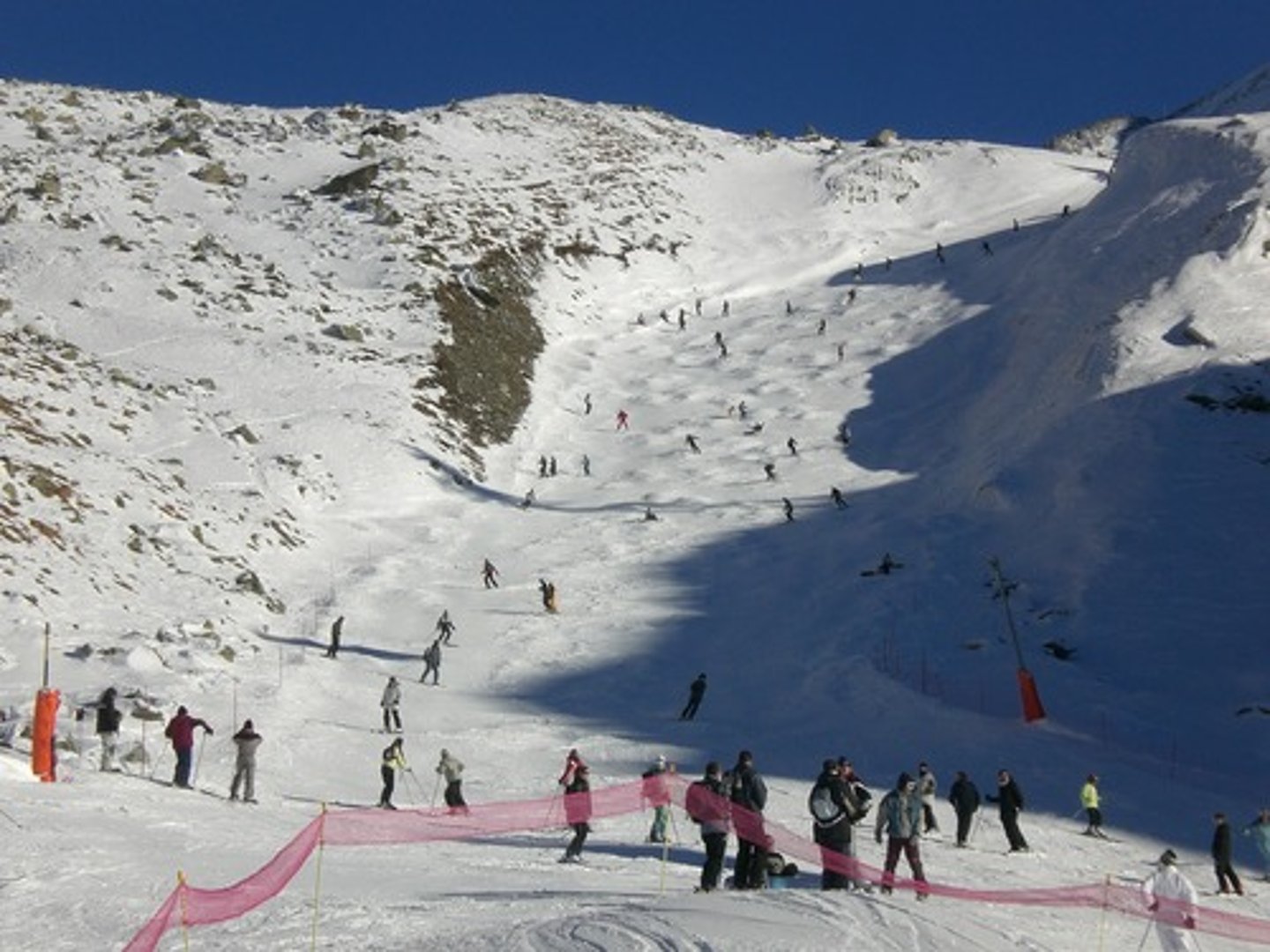
Types of mass movement:
- Heave (slow)
- Flow (medium)
- Slide (fast)
- Falls (rapid)
Increasing velocity of material.

Solifluction:
Slow, downslope flow of water-saturated materials common to permafrost areas.
Wetter form of soil creep.
Topsoil becomes saturated which increases weight and lubricates its descent.
Forms solifluction loves.
5cm - 1m a year travel.
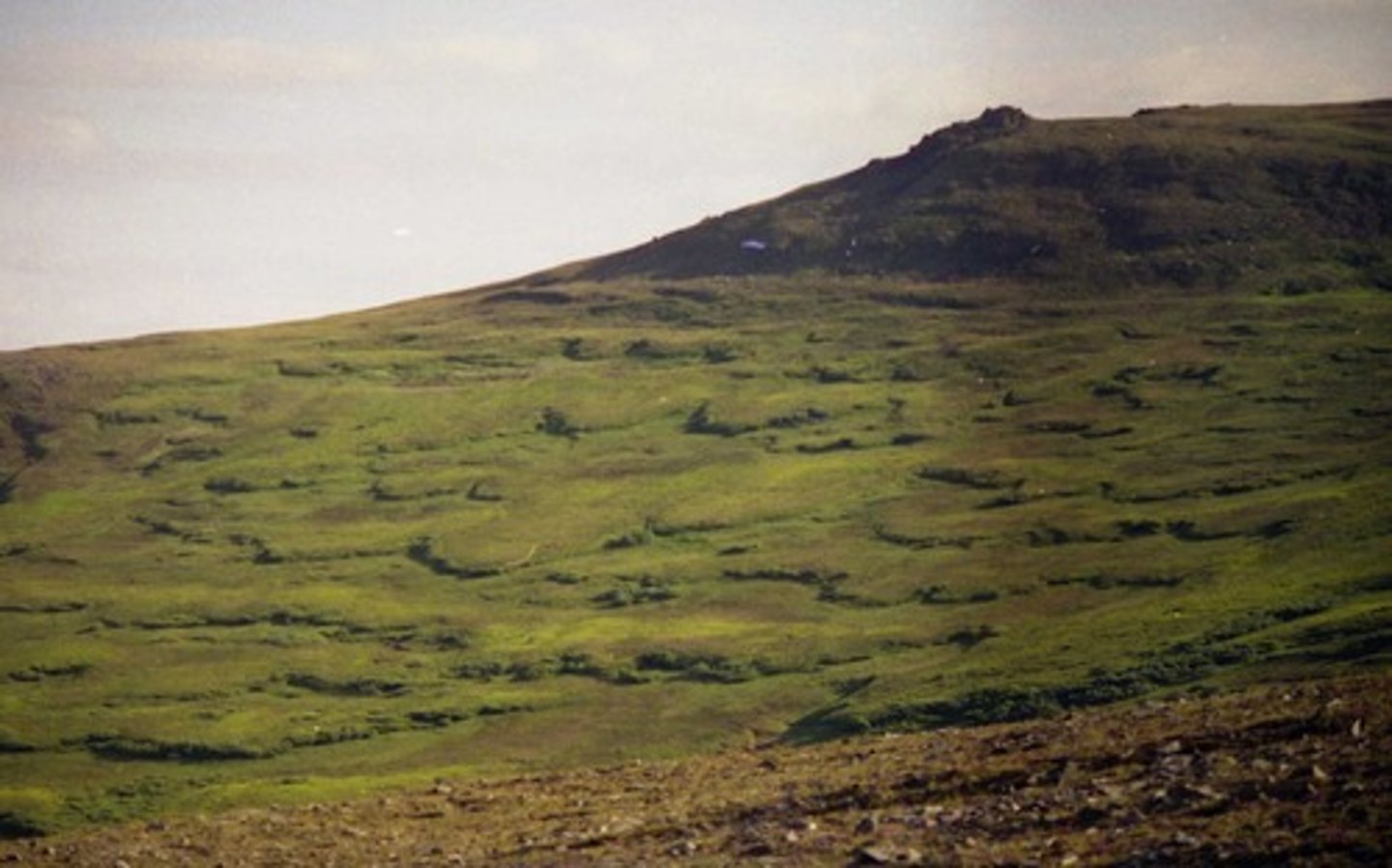
Earthflow:
Slow-moving downslope movement of water-saturated, clay-rich sediment, most characteristic of humid regions
5-15 degrees
1-15km per year

Mudflows:
A rapid downhill movement of a mixture of water, rock, and soil.
Break vegetation.
Exceeds 15km/hr.
e.g. Nevado del Ruiz volcano eruption caused in 1985.
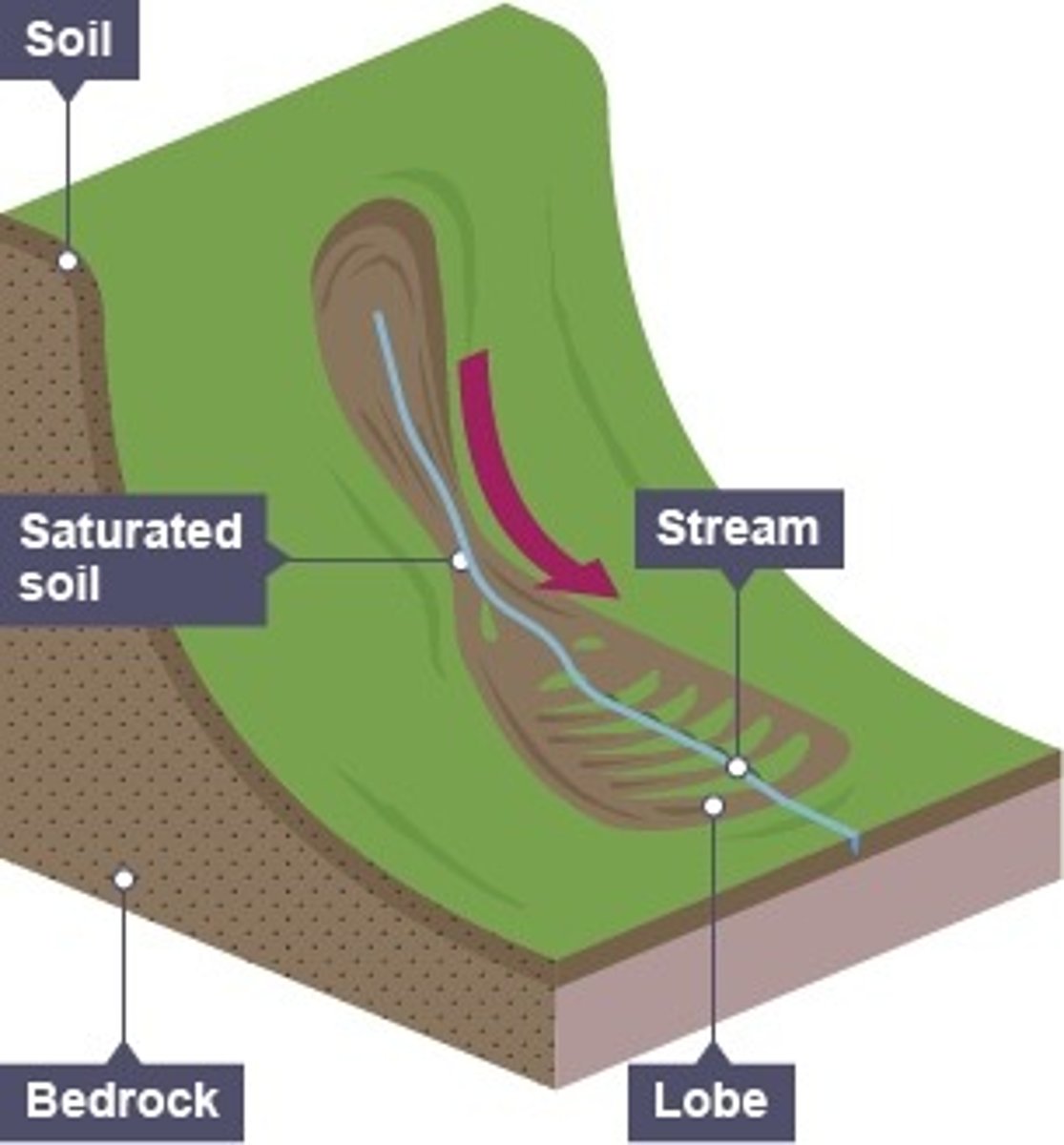
Examples of medium speed movements (flows):
Earthflows and Mudflows.
Slides (fast):
Movement of a cohesive unit with little deformation under the force of gravity (unlike E and M).
30-50 kph.
e.g. Thistle slide damming Spanish Fork.
How is a Slump formed?
When rotational movement occurs. Slump is a common feature on coasts with clay cliff as slope becomes saturated through cracks and vertical movement along slip planes occur (slope was weakened).
Rockfalls (fast):
Occur on steepest slopes 40C resulting from extreme physical or chemical weathering
Material bounces vertically forming scree or talus at the foot.
> 50 kph.
e.g. 2013 Rockville Rock fall in Utah.
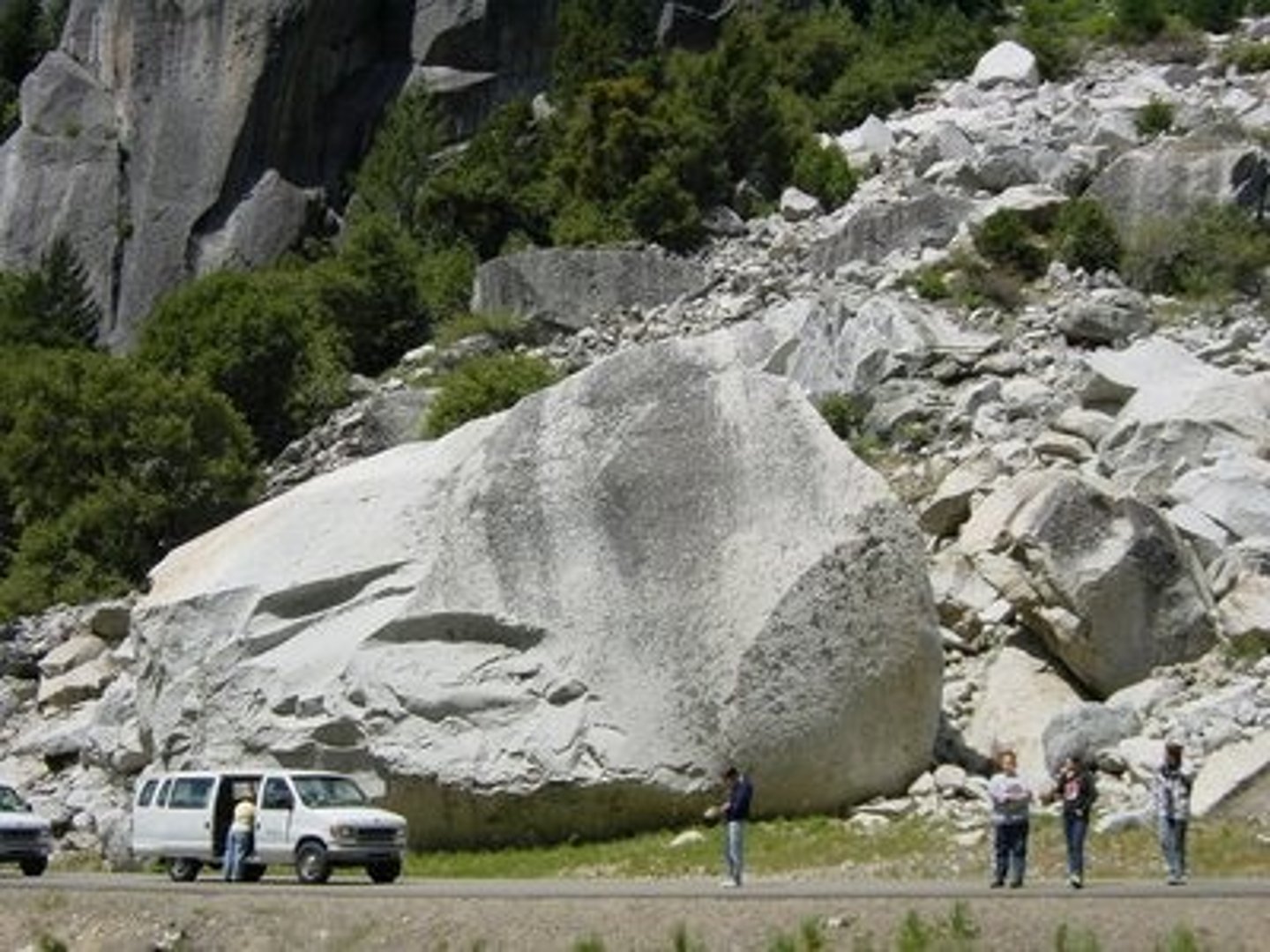
Crown:
Undisturbed material uphill of the scarp.
Main Scarp:
Steep slope at upper edge of landslide, caused by movement of displaced material away from undisturbed ground. (visible part of slide surface).
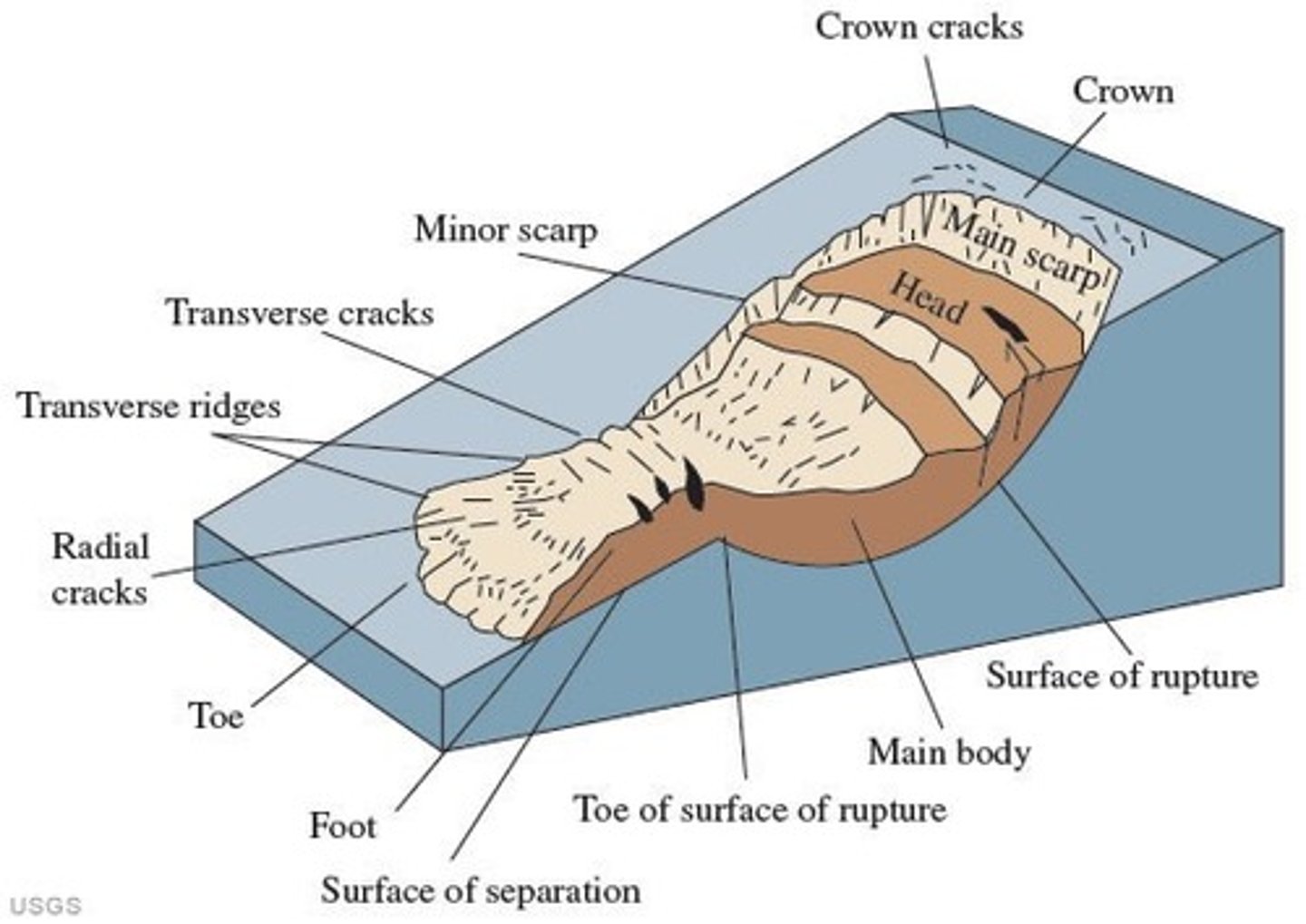
Flank:
Un-displaced material adjacent to the sides of landslide. Left and right lateral extents of mass-wasting material.
Rupture surface (slide plane):
The demarcation between the in-place ground and the slide mass; the surface along which material slides.

Main Body:
Part of the landslide that overlies the rupture surface.

Tension cracks:
Cracks formed as the result of the middle part of the slide being pulled apart, found in the middle of the slide.
Separation surface:
Part of the original ground surface that is now covered by landslide material.
Foot:
Part of landslide that overlies the original ground surface (below separation surface)

Toe:
Downhill end of the slide, most distant from Main Scarp.

Pinning:
Rock bolting where bolts are drilled into the rock in a specific pattern. Transfers loads from weaker to stronger interior of slope reducing landslide risk.
Benefit of Pinning:
Increases internal cohesion --> increases sheer strength.
Slope can resist downward forces
Pinning effectiveness:
Cheap
Several decades life span with maintenance
Implementations may take years
Does not prevent weathering or major landslides
Not appealing to look at
Pinning example:
Used to stabilise slopes near the M23, South of London
Netting / Gabions:
Netting or mesh could be placed over a slope to stabilize it. All of the rocks that will fall would fall straight down to the bottom of the net rather than in the middle of roads, forest or any place that could harm people.
Netting effectiveness:
Cheap
3-5 year life span
Effective at protecting roads
Lessens weathering rather than prevents
Not appealing to look at
Netting example:
e.g. used in Korea next to roads to prevent rockfalls
Benefits of Netting:
Collects fragments of scree.
However, cannot protect against larger mass movement
Afforestation:
The planting of trees in order to increase resistance to prolonged periods of the area and increase slope stabilisation. This is a form of bioengineering widely used in areas where landslide depth is shallow.
Benefits of Afforestation:
Increases sheer strength as the roots soil bind together
Reduces weathering.
Reduces chemical and mechanical weathering.
Vegetation increases the stability of a slope mechanically by reinforcing the soils through plant roots, stabilising the upper layer of soil.
However, forest cover increases slope stability to a large extent.
Afforestation effectiveness:
Trees take 20 years to mature.
Cheap.
Long life-span.
Pleasing to look at.
Creates habitats.
Afforestation example:
e.g. planting long-rooted grass on slopes. In Hong Kong, slope failure has been reduced by 50%
Retaining walls:
These are strong, solid barriers constructed at the base or on a slope in order to intercept falling material and prevent them gathering at the base of a slope. This lessons the impact of mass movement and supports soil laterally in order to retain the soil at separate levels.
Retaining walls benefits:
Reduces gradient of the slope --> reduces sheer stress and force of gravity.
Very effective as they provide slopes with longer-term stability and minimising soil erosion. They improve drainage, helping with soil erosion and flooding, as they direct water away from structure to low-lying areas.
Retaining walls effectiveness:
50 - 100 years life-span.
Very expensive.
Not pleasing to look at but varies.
Retaining walls example:
e.g. used to stabilise slopes in Chicago
Landscaping / Grading:
Grading a slope by lessening the angle to reduce the influence of gravity. This reduces the impact of mass movement as sheer stress is reduced . It involves levelling the land so plant and grass can be planted, as well as any hardscaping required.
Landscaping benefits:
Careful landscaping prevents land erosion, waterlogging and other damage such as structural.
Landscaping effectiveness:
Can destroy habitats.
15-20 years life-span
Expensive, requires diggers
Not pleasing to look at to a large extent.
Requirements for building e.g. preventing soil damage and making sure there is enough water.
Landscaping example:
e.g. used to reduce slopes gradients of slopes near Wiltshire Railway
Hong Kong economic stats:
- Population of 7.2M
- Real GDP of $444bn
Hong Kong climatic stats:
- High temperature
- High levels of rainfall (May to September 180 --> 470mm/month)
- Summer months have frequent landslides e.g. June has 15
Hong Kong environmental stats:
- Crystalline rock like basalt and granite (strong)
- Metamorphic rock
- Sedimentary rock
- Varying levels of geology and afforestation
- GEO implemented the LSMP in 1997, using netting and afforestation
- 187 natural landslips in 60s and 70s
- 371 human landslips in 60s and 70s.